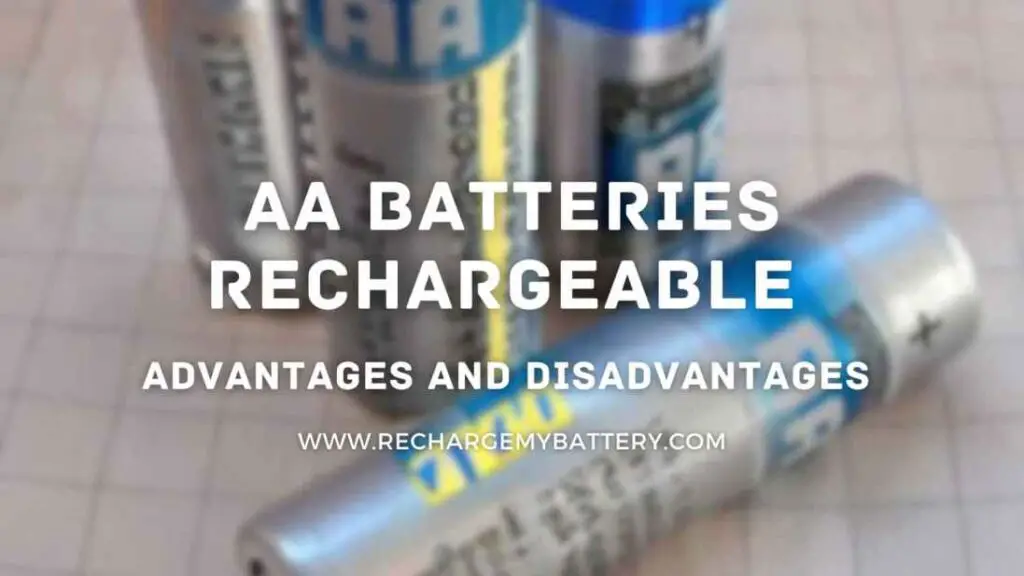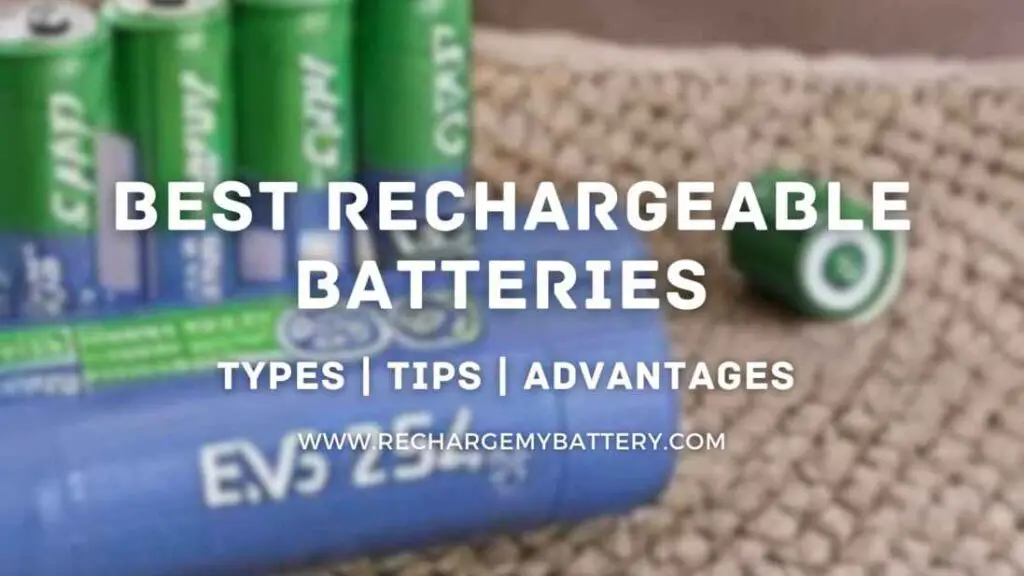If you’re looking to add a touch of magic to your outdoor space while being environmentally conscious, you’re in the right place. In this article, we’ll explore everything you need to know about these innovative batteries that harness the power of the sun to light up your garden. From understanding the benefits to choosing the right type and ensuring their longevity, we’ve got you covered. So, let’s dive in and discover how rechargeable batteries for solar garden lights can transform your outdoor oasis into a captivating wonderland.
1. Why Choose Rechargeable Batteries for Solar Garden Lights?
Picture this: a serene evening in your garden, where the soft glow of solar-powered lights adds a touch of enchantment to every corner. Rechargeable batteries are the powerhouse behind these captivating lights, offering a myriad of reasons why they are the perfect choice for your solar garden lights. Here are a few compelling reasons:
- Energy Efficiency: Rechargeable batteries harness solar energy, making them highly energy-efficient. By utilizing the power of the sun, you can enjoy stunning illumination without adding to your electricity bill.
- Environmentally Friendly: Solar-powered garden lights powered by rechargeable batteries are an eco-friendly lighting solution. By reducing your reliance on conventional power sources, you contribute to a greener and more sustainable future.
- Cost Savings: Traditional batteries require frequent replacement, leading to ongoing expenses. With rechargeable batteries, you make a one-time investment that saves you money in the long run. Say goodbye to constantly purchasing disposable batteries!
2. Understanding the Types of Rechargeable Batteries
When it comes to rechargeable batteries for solar garden lights, there are several types to choose from. Understanding the differences between these battery types can help you make an informed decision. Here are the most common types:
- Nickel-Metal Hydride (NiMH) Batteries: NiMH batteries are a popular choice for solar garden lights. They offer a good balance between cost, capacity, and performance. NiMH batteries are known for their low self-discharge rate, which means they can hold a charge for an extended period.
- Lithium-Ion (Li-Ion) Batteries: Li-Ion batteries are another excellent option for solar garden lights. They are lightweight, have a high energy density, and provide long-lasting performance. Li-Ion batteries also have a low self-discharge rate, ensuring they hold their charge when not in use.
- Nickel-Cadmium (NiCd) Batteries: While NiCd batteries were commonly used in the past, they are gradually being replaced by more advanced battery technologies. NiCd batteries have a “memory effect,” which means they can lose capacity over time if not fully discharged before recharging.
3. The Science Behind Solar-Powered Garden Lights
Ever wondered how solar-powered garden lights transform sunlight into mesmerizing illumination? It all begins with the science behind the technology. Solar-powered lights consist of three key components:
- Solar Panel: The solar panel, typically located on top of the light fixture, absorbs sunlight during the day. It converts the sunlight into electrical energy, which is stored in the rechargeable battery for later use.
- Rechargeable Battery: The rechargeable battery stores the energy generated by the solar panel. It acts as a reservoir of power, ensuring the lights can operate even when the sun isn’t shining. The size and type of the battery impact the duration and brightness of the light.
- LED Bulb: Light Emitting Diode (LED) bulbs are the final piece of the puzzle. These energy-efficient bulbs consume minimal power while emitting a bright and vibrant glow. LED technology ensures long-lasting performance and reduced energy consumption.
4. How Do Rechargeable Batteries for Solar Garden Lights Work?
The magic behind rechargeable batteries for solar garden lights lies in their ability to store and release electrical energy. Here’s a simplified breakdown of how they work:
- Solar panels absorb sunlight and convert it into electrical energy.
- The electrical energy is transferred to the rechargeable battery for storage.
- When ambient light levels decrease, such as at dusk, the battery powers the LED bulbs, illuminating your garden.
- As daylight returns, the solar panel recharges the battery, completing the cycle.
5. Factors to Consider When Buying Rechargeable Batteries
When it’s time to choose rechargeable batteries for your solar garden lights, several factors should influence your decision. Taking these factors into account ensures you select batteries that meet your specific needs. Consider the following:
- Capacity: The capacity of the battery determines how long it can power your lights. Look for batteries with higher capacities if you need longer illumination duration.
- Compatibility: Check the specifications of your solar garden lights to ensure compatibility with the rechargeable batteries you choose. Different lights may have specific requirements.
- Durability: Opt for batteries that are designed to withstand outdoor conditions. Look for features like waterproofing and resistance to temperature extremes.
- Brand Reputation: Choose reputable brands known for their quality and reliability. Research customer reviews and ratings to gauge the performance of different battery brands.
6. Tips for Maximizing the Lifespan of Your Batteries
To ensure your rechargeable batteries for solar garden lights stand the test of time, it’s important to follow a few maintenance and care tips. Consider these recommendations to maximize their lifespan:
- Proper Charging: Follow the manufacturer’s instructions for charging the batteries correctly. Overcharging or undercharging can impact their performance and longevity.
- Clean Solar Panels: Regularly clean the solar panels to remove dust, dirt, and debris that can hinder their ability to absorb sunlight effectively. A clean panel ensures optimal energy conversion.
- Store in Winter: If you live in an area with harsh winters, consider storing your solar garden lights indoors during the cold season. Extreme temperatures can affect battery performance.
- Replace When Needed: Rechargeable batteries have a limited lifespan. If you notice a significant decrease in performance or capacity, it may be time to replace the batteries.
7. Troubleshooting Common Issues
While rechargeable batteries for solar garden lights are generally reliable, you may encounter occasional issues. Here are some common problems and their possible solutions:
- Dim Lights: Dim lights may indicate low battery capacity or reduced solar panel efficiency. Check the battery charge and clean the solar panels to ensure optimal performance.
- Lights Not Turning On: If your lights fail to turn on, check the battery connections and ensure they are properly seated. Also, verify that the solar panels are receiving adequate sunlight.
- Battery Leakage: In rare cases, batteries may leak. If you notice leakage, exercise caution and handle the batteries with care. Dispose of them properly and replace with new batteries.
8. Frequently Asked Questions (FAQs):
Q1. Can I use regular batteries in solar garden lights?
No, regular batteries are not suitable for solar garden lights. They are not designed to handle the charging and discharging cycles required by solar-powered lights. Always use rechargeable batteries specifically designed for solar applications.
Q2. How long do rechargeable batteries for solar garden lights last?
The lifespan of rechargeable batteries varies depending on factors like usage, capacity, and environmental conditions. On average, rechargeable batteries for solar garden lights can last anywhere from 1 to 3 years.
Q3. Can I replace the rechargeable batteries in my solar garden lights?
Yes, most solar garden lights allow for battery replacement. Ensure you choose compatible batteries with the same voltage and dimensions as the original ones.
Q4. Do I need to turn off solar garden lights during the day?
Solar garden lights are designed to automatically turn off during the day and turn on at dusk. There’s no need to manually switch them off or on.
Q5. How many solar panels do I need for my garden lights?
The number of solar panels depends on the size and power requirements of your garden lights. Ensure the solar panels are sufficient to charge the batteries fully during daylight hours.
Q6. Can I leave my solar garden lights out during winter?
Most solar garden lights are designed to withstand outdoor conditions, including winter. However, extreme temperatures can affect battery performance. Consider storing them indoors during harsh winter months.
Conclusion
In conclusion, you are now equipped with the knowledge and insights to harness the power of rechargeable batteries for solar garden lights. By choosing these eco-friendly and cost-effective lighting solutions, you can create an enchanting outdoor space while reducing your environmental footprint. Remember to select the right type of battery, consider important factors before purchasing, and follow maintenance tips to ensure the longevity of your batteries. Now, it’s time to transform your garden into a captivating paradise with the magical glow of solar-powered lights.

